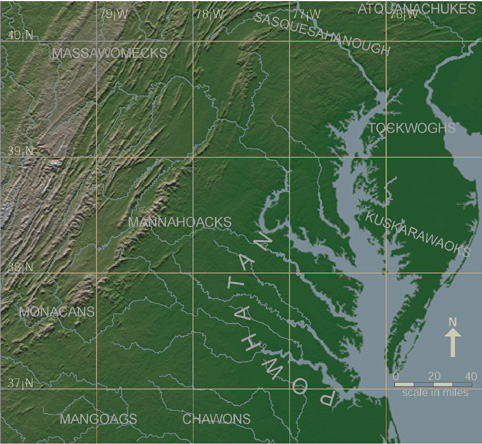
 |
| Overview | Site Context | Examine the Site | Timeline |
Overview of the Paspahegh |
|
|
Site 44JC308, also known as Paspahegh, is one of only a handful of excavated Native American villages in Virginia which date to the Early Contact Period. Located just six miles upstream of Jamestown, the site provides a unique opportunity to understand how direct contact with European colonists affected the native societies of the Virginia Coastal Plain. The people living at the site were Powhatan Indians, Algonquians living in chiefdoms subject to the ruler Powhatan. As subjects of Powhatan and neighbors to the English, the residents of 44JC308 undoubtedly were involved in the exchange of goods and violence that characterized the first years of the Jamestown colony. | |
|
Site 44JC308 was first identified in 1983 by archaeological surveyors from the College of William and Mary's Department of Anthropology. When construction threatened the site in the early 1990s, archaeologists from the James River Institute for Archaeology (JRIA) conducted controlled surface collections across the approximately 31 acre site, later returning to excavate within a 2.1 acre parcel in the southwestern portion of 44JC308. The information on this website is drawn primarily from JRIA's 1994 report of these excavations: "Paspahegh Archaeology: Data Recovery Investigations of Site 44JC308 at the Governor's Land at Two Rivers, James City County, Virginia," edited by Mary Ellen Hodges and Charles Hodges. |
 Map showing the areas occupied by Native American Tribes |